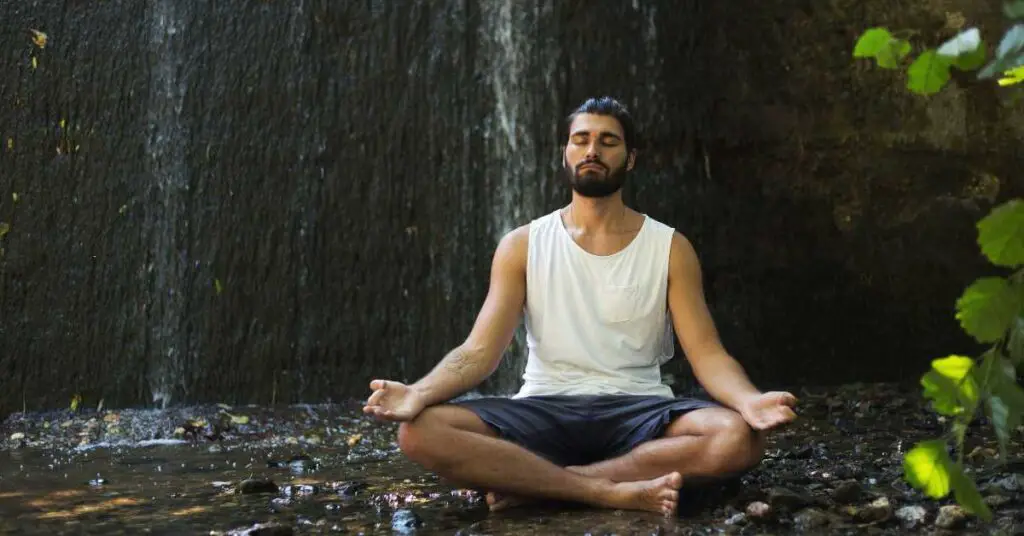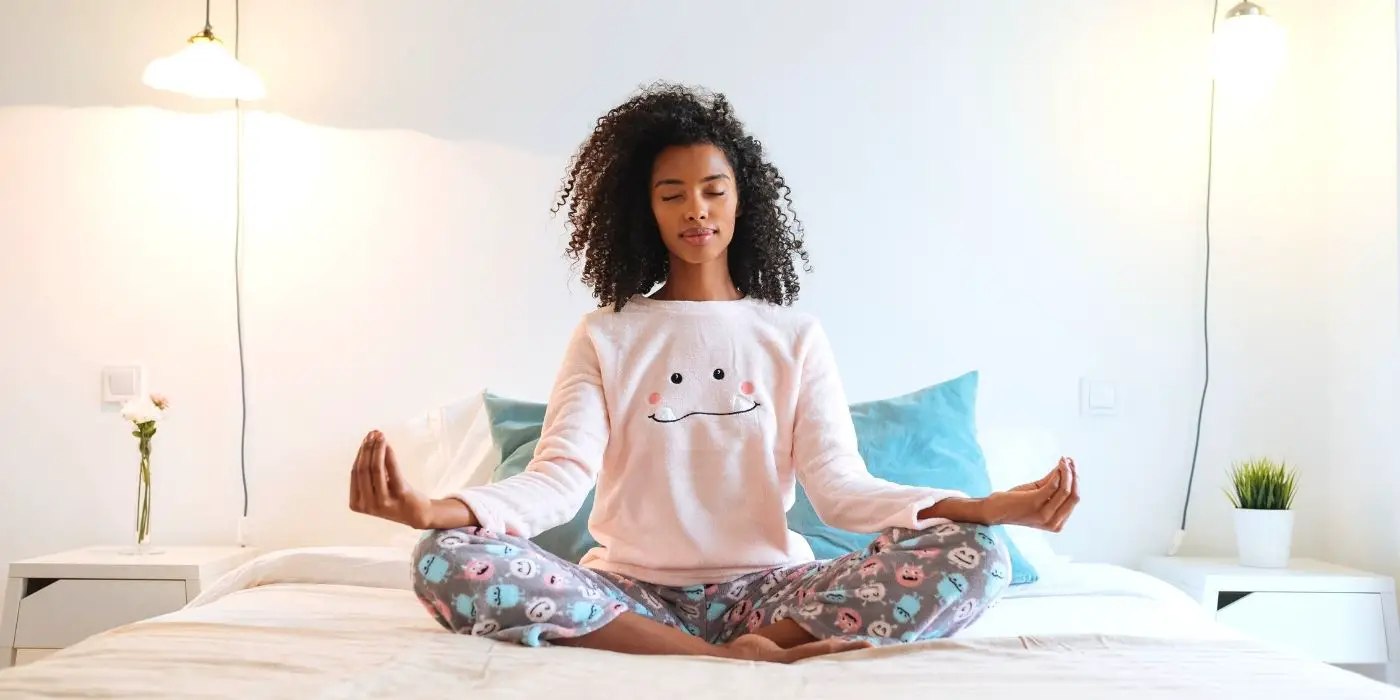You’ve just finished a grueling workout at the gym and your muscles are tense and sore. All you want to do is collapse on the couch and let your body recover.
But have you ever considered incorporating meditation into your post-workout routine? It may seem counterintuitive, but combining exercise and meditation can have powerful benefits for both your body and mind.
Meditation is a practice that helps you become more mindful and present in the moment. It can reduce stress and anxiety, improve focus and concentration, and enhance overall well-being.
By meditating after a workout, you can continue the positive effects of your exercise by reducing muscle tension and calming your mind. So, can you meditate after working out? Absolutely! In fact, it may be one of the best things you can do for your physical and mental health.
The Benefits of Combining Meditation and Exercise
Feeling extra zen and energized is just one of the many perks of combining a workout with a mindfulness practice. When you exercise, you’re already tapping into the mind-body connection. Adding mindful movement and meditation techniques to the mix can help you take that connection to a whole new level.
By practicing meditation after a workout, you can help your body transition from a state of high intensity to a more relaxed state. This can help reduce stress and anxiety, while also promoting better sleep.
Additionally, meditation can help you stay more present during your workout, which can improve your form and prevent injury.
Overall, combining meditation and exercise can help you feel more connected to your body and mind.
So, the next time you finish up your workout, take a few moments to sit quietly and focus on your breath. You may be surprised by how much more relaxed and energized you feel throughout the day.

Reducing Muscle Tension through Mindfulness
By practicing mindfulness, you can relax your muscles and release any tension, allowing you to feel more at ease and refreshed.
The mind-body connection is a powerful one, and by being present in the moment during your workout, you can become more aware of your body and its needs. Mindful stretching, for example, can help you tune into areas of tightness or discomfort and address them before they become a bigger issue.
Reducing muscle tension through mindfulness can also improve your overall performance during your workout. When your muscles are tight, they are less flexible and can lead to a greater risk of injury. By practicing mindfulness and reducing tension, you can improve your range of motion and decrease your chances of getting injured.
Additionally, when your muscles are more relaxed, you can move with greater ease and efficiency, leading to a more productive workout.
Incorporating mindfulness into your post-workout routine can also be beneficial for reducing muscle soreness and aiding in recovery. By taking a few moments to focus on your breath and release any tension in your body, you can promote relaxation and help your muscles recover faster.
This can lead to a more enjoyable workout experience overall, as well as improved results in the long run. So go ahead and try meditating after working out – your body will thank you for it!
Calming the Mind and Enhancing Well-Being
Take a moment to quiet your thoughts and focus on the present, allowing yourself to fully experience the benefits of meditation techniques and mindfulness exercises.
After a workout, it can be difficult to calm your mind and enhance your well-being. However, meditation can be an excellent way to achieve this. Mindfulness exercises can help you to relax, reduce stress, and improve your overall well-being.
One of the benefits of meditation after a workout is that it can help you to reduce the stress and tension that you may be feeling in your muscles. By focusing on your breath and quieting your thoughts, you can release any tension that you may be holding onto. This can help you to feel more relaxed and centered, and can also help to enhance your overall physical and mental well-being.
Incorporating meditation into your post-workout routine can also help you to cultivate a sense of peace and contentment. By taking a few moments to quiet your thoughts and focus on the present, you can feel more grounded and centered. This can help you to feel more connected to yourself and to those around you.
So, take a few moments to meditate after your workout and experience the many benefits that mindfulness can bring to your life.
Deep Breathing Techniques for Post-Workout Meditation
Want to enhance your post-workout relaxation? Try incorporating some deep breathing techniques into your routine!
After a tough workout, it can be difficult to switch off your mind and fully relax. Practicing deep breathing techniques can help you achieve a state of calm and allow your body to fully recover.
One effective technique is visualization. Close your eyes and imagine yourself in a peaceful environment, such as a beach or a forest. Focus on the sights, sounds, and smells of this environment. As you breathe deeply, allow yourself to fully immerse in this mental space. This technique can help you let go of any worries or stressors and fully relax your mind.
Another technique is active meditation poses. Instead of sitting in a stationary position, try incorporating movement into your meditation. Yoga poses, such as downward dog or child’s pose, can help you stretch your muscles while also promoting relaxation. Incorporating these poses into your post-workout routine can help you transition from an active state to a more relaxed state.
Creating a Meditative Space for Recovery
To fully enhance your post-workout recovery, it’s important to create a space that promotes relaxation and calmness. After all, exercise is a form of stress on the body, and it’s crucial to give your muscles time to rest and recover.
Creating a meditative space for recovery can help you relax both physically and mentally, allowing your body to heal and recharge. The importance of rest and relaxation after exercise cannot be overstated. In fact, studies have shown that taking time to unwind after a workout can help reduce muscle soreness, improve sleep quality, and even boost your immune system.
By creating a meditative space that is free from distractions and promotes calmness, you can help your body and mind fully recover from your workout. When creating a meditative space for recovery, it’s important to consider your own preferences and needs. Some people might prefer a quiet, dark room with candles or soft lighting, while others might prefer a sunny spot outside.
Whatever your preference, make sure your space is free from distractions like phones or TVs, and take the time to fully relax and unwind. By creating a space that promotes relaxation and calmness, you can enhance your post-workout recovery and feel more refreshed and energized for your next workout.
Incorporating Meditation into Your Fitness Routine
As you strive to achieve your fitness goals, incorporating meditation into your routine can not only enhance your physical performance but also improve your mental clarity and overall well-being. A 5-minute meditation before your workout can help you mentally prepare for the physical activity ahead. It can help you focus on your goals and clear your mind of any distractions that might hinder your performance. This can lead to a more productive and efficient workout session.
Here are four ways to incorporate meditation into your fitness routine:
- During warm-ups: Take a few deep breaths and focus on your breath as you prepare your body for the workout.
- In between sets: Instead of looking at your phone or talking to others, take a minute to close your eyes and meditate. This can help you recover faster and prepare for the next set.
- After your workout: A 5-minute meditation after your workout can help you calm your mind and reduce any stress or tension that might have built up during the workout.
- During cooldowns: As you stretch and cool down, take a few minutes to meditate and reflect on your workout. This can help you appreciate your effort and motivate you to continue working towards your fitness goals.
Incorporating meditation into your fitness routine can help you achieve a sense of balance between your body and mind. It can also help you feel more connected to your body and the workout, leading to a more fulfilling and enjoyable experience.
So, take a few moments to meditate before, during, or after your workout and see the difference it can make in your physical and mental well-being.
Tips for Consistent Practice and Maximizing Results
If you’re looking to maximize your fitness results and establish a consistent meditation practice, these tips will help you achieve your goals.
Firstly, consider incorporating pre-workout meditation to balance your energy levels. This will help you focus and mentally prepare for your workout, allowing you to be more present and aware of your body’s movements. It can also help reduce anxiety and stress, setting the tone for a successful workout.
Secondly, post-workout meditation can be a great way to promote relaxation and recovery. After pushing your body to its limits, taking even just a few minutes to sit and breathe can help reduce muscle tension and soreness. It can also help your mind unwind and let go of any stress or distractions from the day. This can lead to improved sleep and overall wellness.
To establish a consistent meditation practice, try to make it a non-negotiable part of your routine. Find a time and a place where you can consistently practice, and make it a priority. You can also experiment with different types of meditation, such as guided meditations or mindfulness practices.
Remember, consistency is key. Even just a few minutes of meditation each day can have a significant impact on your mental and physical well-being.

Frequently Asked Questions
What are some common mistakes to avoid when meditating after a workout?
Meditating after a workout can be a great way to wind down and center yourself, but it’s important to avoid some common mistakes to get the most out of your practice.
One key mistake is not paying attention to your meditation posture. Whether you’re sitting on the floor or in a chair, make sure your spine is straight and your shoulders are relaxed.
Another important aspect is breathing techniques. Taking deep, slow breaths can help you calm your mind and focus your attention.
So, if you’re looking for a way to enhance your post-workout routine, consider incorporating meditation into your regimen and avoid these common mistakes for a more fulfilling practice.
How long should I wait after exercising before beginning a meditation session?
Proper timing is crucial when it comes to pre-workout meditation. It’s important to allow your body enough time to cool down and recover before beginning a meditation session.
This will help you achieve a deeper state of relaxation and enhance the benefits of your meditation practice. Waiting at least 10-15 minutes after exercising before meditating is recommended as this allows your heart rate to normalize and your breathing to become more steady.
By incorporating pre-workout meditation into your fitness routine with proper timing, you’ll not only improve your physical health but also your mental clarity and overall well-being.
Can meditation help with post-workout soreness and recovery?
Meditation techniques have been known to offer a wide range of benefits, including physical and mental health.
One of the most significant advantages of mindfulness is its ability to alleviate post-workout soreness and speed up recovery. By focusing on your breath and body sensations, you can increase blood flow and oxygenation to the muscles, reducing inflammation and promoting healing.
Additionally, meditation can help promote a sense of calm and relaxation, reducing stress levels and allowing your body to recover more efficiently.
Incorporating meditation into your post-workout routine can be a powerful way to optimize your fitness goals and improve your overall well-being.
Is it better to meditate before or after a workout?
Meditation can have both pre and post workout benefits, and the timing ultimately depends on your personal preference and goals.
If you meditate before your workout, you can improve your focus, mental clarity, and energy levels, which can lead to a more effective and efficient workout.
On the other hand, if you meditate after your workout, you can reduce stress and tension in the body, promote muscle recovery, and enhance overall relaxation.
Ultimately, the decision of when to meditate should be based on what feels most natural and beneficial for you. Experiment with both pre and post workout meditation to discover your ideal routine for optimal mind-body benefits.
How can I incorporate meditation into group fitness classes or team sports?
Did you know that incorporating meditation in competition can increase athletic performance by 20%?
Mindful exercise routines, such as yoga and meditation, have been shown to improve focus, reduce anxiety, and enhance overall well-being.
Integrating these practices into group fitness classes or team sports can create a sense of unity and shared purpose, leading to a stronger team dynamic and increased motivation.
By taking a few moments to breathe and center yourself before a game or workout, you’ll be able to perform at your best and feel more connected to your teammates.
So why not give it a try and see how meditation can benefit both your physical and mental health in a competitive setting?
Conclusion
So, can you meditate after working out? Absolutely!
Not only is it possible, but it can also be highly beneficial for your overall well-being. By combining meditation and exercise, you can reduce muscle tension, calm your mind, and enhance your recovery.
Just imagine, you finishing a challenging workout and then taking a few moments to sit down, close your eyes, and breathe deeply. As you focus on your breath, your muscles begin to relax, and your mind clears.
You feel a sense of peace and contentment wash over you, leaving you refreshed and ready to tackle whatever comes your way. So go ahead, give it a try and experience the powerful combination of meditation and exercise for yourself.




